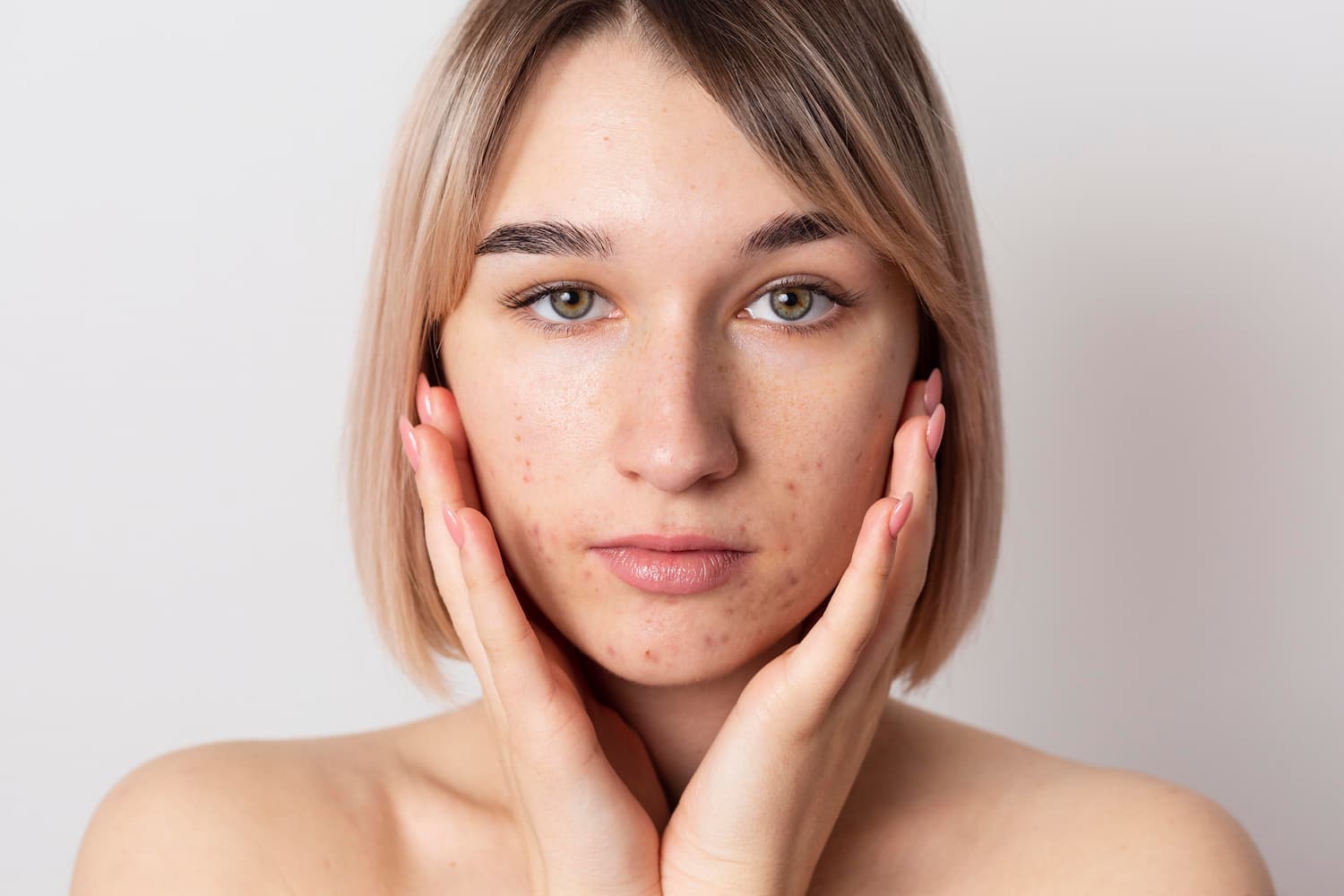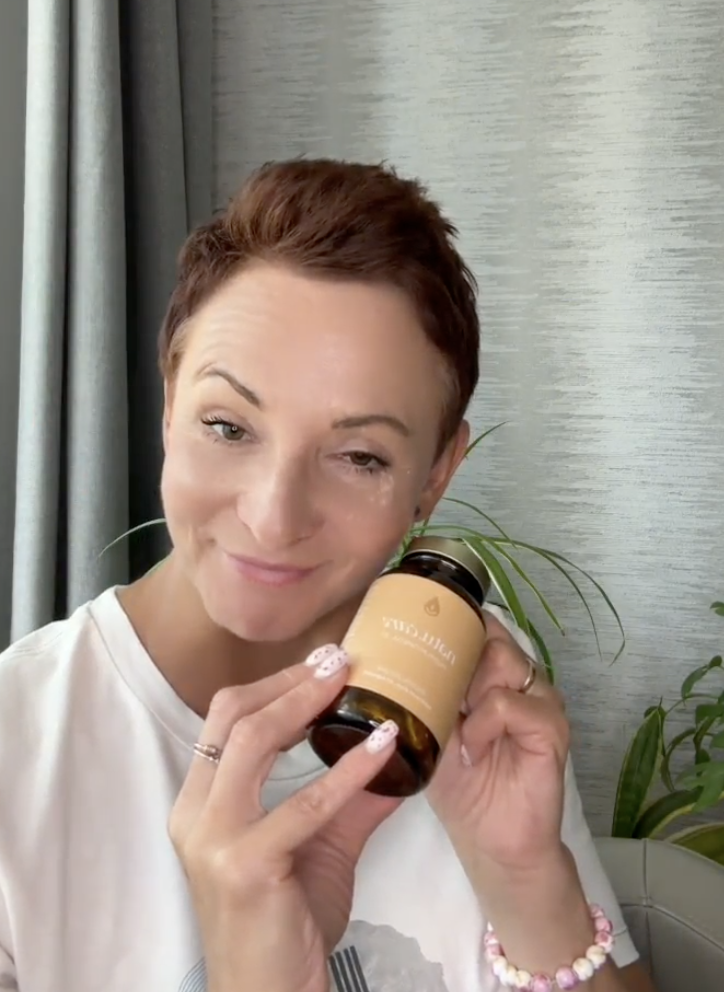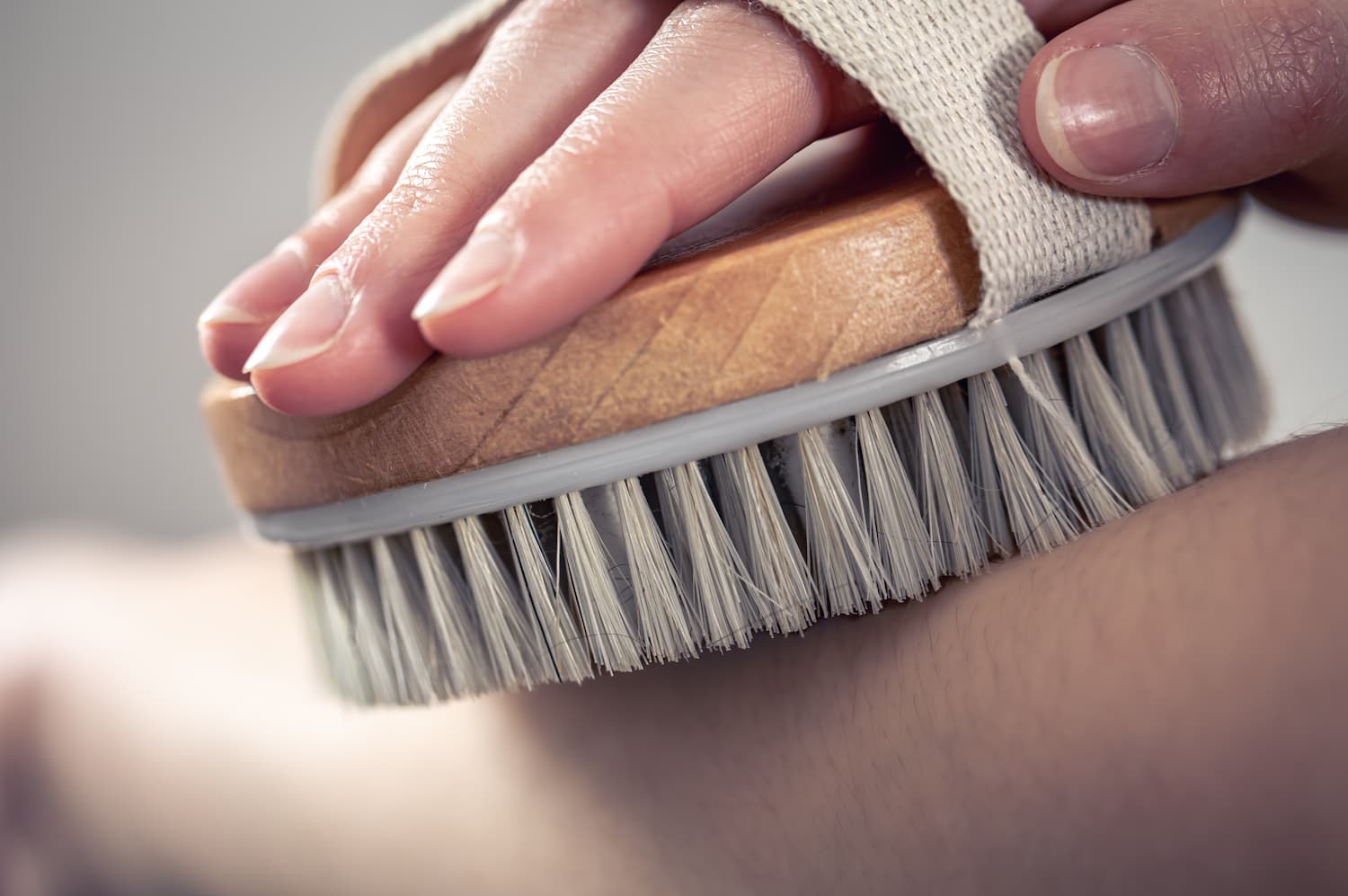Benzoyl peroxide (Benzacne ingredient): what it is and how it works
The cult drug Benzacne owed its effectiveness precisely to benzoyl peroxide. Since its withdrawal, many damaging myths have arisen about this substance. Here we debunk them.


Learn more about our editorial process
.

Learn more about our editorial process
.

Learn more about our editorial process
.

Learn more about our editorial process
.
Why you can trust us
Articles on Natu.Care are written based on scientific research, data from government websites and other reliable sources. The texts are written in cooperation with doctors, nutritionists and other health and beauty experts. Articles are reviewed before publication and during significant updates.
.Learn more about our editorial process
.Information about advertisements
Content on Natu.Care may contain links to products from the sale of which we may receive a commission. When creating content, we adhere to high editorial standards and take care to be objective about the products discussed. The presence of affiliate links is not dictated by our partners, and we select the products we review ourselves completely independently.
.Learn more about our terms and Conditions
.Benzoyl peroxide has long been an ingredient in skincare products, especially those designed to treat acne. It has strong antibacterial, exfoliating and anti-inflammatory properties, so it's no wonder it's so popular.
But what exactly is benzoyl peroxide? How does it work on the skin? And, more importantly, how to use it effectively, minimising potential side effects?
.
In this article:
- We will tell you what benzoyl peroxide is. .
- We will explain its properties and mechanism of action. .
- We will tell you how to effectively use benzoyl peroxide in your skin care routine.
- We will explain its properties and mechanism of action.

Sprawdź, za co pokochały go tysiące klientek Natu.Care Premium Omega-3ᵀᴳ -15% z kodem BLOG15
Natu.Care Omega-3ᵀᴳ Premium
Natu.Care Omega-3ᵀᴳ Premium dla zdrowia serca, mózgu i odporności. Najlepsza przyswajalność. Optymalna dawka 750 mg. Przebadana przez niezależne laboratorium.
Zobacz więcej
Produkt ma super skład, transparentną etykietę i co dla mnie jest ważne – małe kapsułki do połknięcia. Nie ma też nieprzyjemnego efektu odbijania rybą, który miałam spożywając inne produkty. Widzę znaczną poprawę odporności. Polecam!@Kasia P.
See also:
.
- Retinol
- Tips from TikTok: tooth glue and face lube
- Collagen for skin, hair and nails
- Collagen for the face
- Collagen for acne
- Collagen for skin
- Hyaluronic acid
- Facial moisturizer
- Vitamin C serum
- Niacin
- Vitamin A
What is benzoyl peroxide?
.
Benzoyl peroxide is a common ingredient in skin care products, mainly those designed to treat acne. It looks like a white powder, and is soluble in many liquids, but not in water. The main role of benzoyl peroxide is to kill bacteria on the skin, especially those that can cause acne.
Alongside this, it also helps to reduce swelling on the skin and cleanse clogged pores by removing dead skin cells. Benzoyl peroxide can be found in various forms such as creams, gels and cleansers. It is usually applied directly to the skin affected by acne. It is a popular and effective treatment for acne vulgaris.
What effects did Benzacne ointment produce? The benzoyl peroxide contained in it destroyed the bacteria responsible for acne lesions, namely the anaerobic Propionibacterium acnes, as well as the cutaneous staphylococcus epidermidis. In addition, it reduced sebum production and facilitated the exfoliation of dead skin.
See also:
.
How can benzoyl peroxide help with skin care?
.
- Can reduce inflammation and clear clogged poresand. .
- Can reduce the number of acne-causing bacteria on the skin .
- Can effectively reduce acne blemishes . .
- Combining benzoyl peroxide with other ingredients, such as adapalene, can make it even more effective and easier for external application . .
- Some people may experience dryness and irritation of the skin when using benzoyl peroxide therapy - this may discourage regular treatment and negatively affect the results of the therapy . .
What are the benefits of benzoyl peroxide?
.
Benzoyl peroxide has several key benefits for the skin.
- Firstly, it helps kill bacteria on the skin, including those that cause acneand. .
- May reduce redness and swelling associated with acne .
- Benzoyl peroxide helps unclog pores, which can help stop new acne blemishes from forming .
- It can be combined with other skin treatments, such as antibiotics or anti-fungal creams, for even better results .
- Special controlled-release benzoyl peroxide products can reduce skin irritation without sacrificing efficacy .
How to use benzoyl peroxide?
.
Since you already know what benzoyl peroxide is and how it works, let's move on to the most important aspect: how to apply it to the skin. Follow these tips - it will help you achieve the best results while minimising potential side effects.
Choose the right product
.
Choose a product designed for your skin type and the problems you face. Benzoyl peroxide comes in a variety of forms, such as face washes, gels, creams or spot treatments. Each type serves a unique purpose.
Facial cleansers
.
If you have oily or acne-prone skin, a facial wash with benzoyl peroxide can be a great option. These products help to remove excess sebum. They can be used once or twice a day.
Gels and creams
.
These are products to be left on the skin for longer. They allow prolonged contact of benzoyl peroxide with the skin. They are suitable for treating larger areas of acne and can be applied once a day.
Point treatments
.
Point treatments are best for single pimples or small clusters of pimples. They usually have higher concentrations of benzoyl peroxide and should be used sparingly.
Start with a lower concentration
.
Benzoyl peroxide products come in different concentrations, usually from 2.5% to 10%. To get the best results and minimise possible irritation, it is recommended to start with the lowest concentration. If your skin tolerates them well, you can gradually increase the concentration as needed.
Apply basic hygiene and safety rules
.
To effectively incorporate benzoyl peroxide into your routine skin care, follow these tips:
Clean your face
.
Before applying benzoyl peroxide, make sure your skin is clean and dry. Use a gentle water-based cleanser without fragrance or dyes.
Apply a thin layer
.
Use a thin layer of your chosen benzoyl peroxide product on acne affected areas. Excessive application can lead to excessive dryness and irritation.
.
Be consistent
.
Consistency is the key to visible results. Use the product as recommended on the pack, usually once a day, for best results.
Before use, do a patch test
.
As with any new skincare product, do a patch test to check for possible reactions. Apply a small amount of benzoyl peroxide to the inner arm and wait 24 hours. If no irritation occurs, you can most likely use the product safely.
Keep your skin moisturised
.
The use of benzoyl peroxide can cause dry skin. Ensure that your skin is properly hydrated by using a non-comedogenic moisturiser.
Maintain precautions
.
When using benzoyl peroxide, the following precautions should be kept in mind:
.
Side effects
.
While using benzoyl peroxide, temporary dryness, flaking and redness may occur. If these symptoms worsen or do not subside, discontinue use and consult a dermatologist.
Allergic reactions
.
Although rare, benzoyl peroxide can cause allergic reactions. If you experience swelling, itching or severe redness, contact your doctor immediately.
Physician.
Sun exposure
.
Benzoyl peroxide may increase skin sensitivity to sunlight. Always wear sunscreen, protective clothing, and a wide-brimmed hat when outdoors.
Sunscreen should be worn at all times.
Fabric bleaching
.
Keep in mind that benzoyl peroxide can bleach some fabrics such as towels, bedding and clothing. Allow the product to dry completely before contact with these fabrics.
As with the use of any other cosmetic, carefully monitor your skin's reaction and consult a dermatologist if you have any concerns or questions.
Are there any risk factors associated with the use of benzoyl peroxide?
.
The use of benzoyl peroxide in skin care products is associated with possible side effects and adverse reactions:
- Typical problems may include skin irritation, dryness, itching, burning and rednessand. These side effects often depend on how strong the product is, so using a less concentrated formula can help reduce themand.
- Benzoyl peroxide can also cause flaky skin . .
- In some cases it can even lead to scarring . Scarring resulting from the use of benzoyl peroxide has been identified in one study as one of the causes of emotional disturbance that study participants began to experience .
- Some studies suggest that benzoyl peroxide may potentially facilitate skin cancer formation and damage DNA .
If you are using benzoyl peroxide, it is imperative that you are aware of these risks and stop using the product immediately as soon as you observe side effects and adverse reactions .
.
How to dose benzoyl peroxide correctly?
.
- .
- The appropriate dose of benzoyl peroxide depends on the specific product and the severity of the skin problem. .
- One study on acne treatment used a pump dispenser to achieve a constant dose (0.5 ml) of a combination of adapalene 0.1% and benzoyl peroxide 2.5% with each useand.
- Another study used 5% and 10% concentrations of benzoyl peroxide with high efficacy to prevent the growth of a specific type of bacteria .
- Determining the optimal dose for general purposes may require further research. .
If you are using benzoyl peroxide, be sure to follow your doctor's instructions or the information on the leaflet. This way, you will use the right amount of product and reduce the risk of side effects.
What substances can be combined with benzoyl peroxide to achieve better results for the skin?
.
There are several other ingredients that can be combined with benzoyl peroxide to enhance its benefits for the skin.
- Benzoyl peroxide in combination with triethyl citrate and ethyl linoleate has been shown to be more effective in improving overall skin health and appearanceand. .
- Some healthy fats, such as 15-OHEPA, DGLA and EPA, may work in synergy with benzoyl peroxide and fight acne-causing bacteria even more effectively .
- Other substances to consider in combination with benzoyl peroxide include: retinoids, light exfoliants, liposomes, jojoba oil and clindamycin . .
- These mixtures can improve acne treatment, moisturise the skin, reduce irritation and generally lead to better results .
FAQ
.Can benzoyl peroxide bleach fabrics?
.Yes, benzoyl peroxide can bleach fabrics. Be careful when reaching for clothes and towels when using products containing benzoyl peroxide.
How many times a day can I use a benzoyl peroxide medication?
.Apply benzoyl peroxide medicine once or twice a day, as directed by your doctor or according to the instructions on the pack.
How many times a day can I use benzoyl peroxide medicine?
Is benzoyl peroxide on prescription?"
.Some benzoyl peroxide preparations are available without a prescription, while others, with higher concentrations, require a prescription from a doctor.
What not to combine benzoyl peroxide with?
.Do not combine benzoyl peroxide with medications containing tretinoin, isotretinoin or salicylic acid products to avoid skin irritation and dryness.
What are the alternatives to benzoyl peroxide?
.Alternatives to benzoyl peroxide include salicylic acid, glycolic acid, retinoids, antibiotics in cream, gel or oral form, and laser therapy. Consult your doctor, who can help you choose an appropriate alternative.
What do dermatologists recommend for acne?
.Dermatologists recommend individualised treatments, usually including drugs containing benzoyl peroxide, salicylic acid, retinoids, antibiotics, hormone therapy or laser therapy. For best results, consult individually.
.Why was Benzacne withdrawn?
.The withdrawal of Benzacne from the Polish market was due to the manufacturer's decision and related to business and marketing issues, not to the safety of use or product performance. Other benzoyl peroxide products are still available.
.
Sources
.See all
.Ahluwalia, J., Borok, J., Haddock, E. S., Ahluwalia, R. S., Schwartz, E. W., Hosseini, D., Amini, S., & Eichenfield, L. F. (2019a). The microbiome in preadolescent acne: Assessment and prospective analysis of the influence of benzoyl peroxide. Pediatric Dermatology, 36(2), 200-206. https://doi.org/10.1111/pde.13741
Algburi, A., Zehm, S., Netrebov, V., Weeks, R., Zubovskiy, K., & Chikindas, M. L. (2018). Benzoyl Peroxide Inhibits Quorum Sensing and Biofilm Formation by Gardnerella vaginalis 14018. Infectious Diseases in Obstetrics and Gynecology, 2018, e1426109. https://doi.org/10.1155/2018/1426109
Bellei, E., Rota, C., Bergamini, S., Manfredini, P., Albertazzi, A., Tomasi, A., & Iannone, A. (2004). Effect of α-tocopherol and N-acetylcysteine on benzoyl peroxide toxicity in human keratinocytes. Journal of Biochemical and Molecular Toxicology, 18(2), 107-114. https://doi.org/10.1002/jbt.20008
Bouloc, A., Roo, E., Imko-Walczuk, B., Moga, A., Chadoutaud, B., & Dréno, B. (2017). A skincare combined with combination of adapalene and benzoyl peroxide provides a significant adjunctive efficacy and local tolerance benefit in adult women with mild acne. Journal of the European Academy of Dermatology and Venereology, 31(10), 1727-1731. https://doi.org/10.1111/jdv.14379
.Case39. (n.d.). Our Dermatology Online. Retrieved June 26, 2023, from http://www.odermatol.com/online-section/case39/
Desbois, A. P., & Lawlor, K. C. (2013). Antibacterial Activity of Long-Chain Polyunsaturated Fatty Acids against Propionibacterium acnes and Staphylococcus aureus. Marine Drugs, 11(11), Article 11. https://doi.org/10.3390/md11114544
Dréno, B., Araviiskaia, E., Kerob, D., Andriessen, A., Anfilova, M., Arenbergerova, M., Forero Barrios, O. L., Bukvić Mokos, Z., Haedersdal, M., Hofmann, M. A., Khamaysi, Z., Kosmadaki, M., Lesiak, A., Roó, E., Zbranca-Toporas, A., Wiseman, M. C., Zimmo, S., Guerin, L., & Fabbrocini, G. (2020). Nonprescription acne vulgaris treatments: Their role in our treatment armamentarium-An international panel discussion. Journal of Cosmetic Dermatology, 19(9), 2201-2211. https://doi.org/10.1111/jocd.13497
Dubey, A., & Amane, H. (2019). Comparative clinical study of efficacy and safety of adapalene 0.1% gel versus benzoyl peroxide 2.5% gel for the treatment of acne vulgaris. International Journal of Basic & Clinical Pharmacology, 8(10), 2317-2321. https://doi.org/10.18203/2319-2003.ijbcp20194279
Dubina, M. I., & Fleischer, A. B., Jr. (2009). Interaction of Topical Sulfacetamide and Topical Dapsone With Benzoyl Peroxide. Archives of Dermatology, 145(9), 1027-1029. https://doi.org/10.1001/archdermatol.2009.186
Gad, H. A., Roberts, A., Hamzi, S. H., Gad, H. A., Touiss, I., Altyar, A. E., Kensara, O. A., & Ashour, M. L. (2021). Jojoba Oil: An Updated Comprehensive Review on Chemistry, Pharmaceutical Uses, and Toxicity. Polymers, 13(11), Article 11. https://doi.org/10.3390/polym13111711
.http://viorel.tel. (n.d.). CONCOMITANT HPLC ANALYSIS OF ADAPALENE AND NADIFLOXACIN IN THE PRESENCE OF GLYCOLIC ACID - Farmacia Journal. Retrieved June 26, 2023, from https://farmaciajournal.com/issue-articles/concomitant-hplc-analysis-of-adapalene-and-nadifloxacin-in-the-presence-of-glycolic-acid/
James, K. A., Burkhart, C. N., & Morrell, D. S. (2009). Emerging drugs for acne. Expert Opinion on Emerging Drugs, 14(4), 649-659. https://doi.org/10.1517/14728210903251690
Keating, G. M. (2011). Adapalene 0.1%/Benzoyl Peroxide 2.5% Gel. American Journal of Clinical Dermatology, 12(6), 407-420. https://doi.org/10.2165/11208170-000000000-00000
Kurokawa, I., Danby, F. W., Ju, Q., Wang, X., Xiang, L. F., Xia, L., Chen, W., Nagy, I., Picardo, M., Suh, D. H., Ganceviciene, R., Schagen, S., Tsatsou, F., & Zouboulis, C. C. (2009). New developments in our understanding of acne pathogenesis and treatment. Experimental Dermatology, 18(10), 821-832. https://doi.org/10.1111/j.1600-0625.2009.00890.x
Mancuso, A., Cristiano, M. C., Fresta, M., & Paolino, D. (2020). <p>The Challenge of Nanovesicles for Selective Topical Delivery for Acne Treatment: Enhancing Absorption Whilst Avoiding Toxicity</p>. International Journal of Nanomedicine, 15, 9197-9210. https://doi.org/10.2147/IJN.S237508
Over the Counter Products for Acne Treatment and Maintenance in Latin America: A Review of Current Clinical Practice. (n.d.). JDDonline - Journal of Drugs in Dermatology. Retrieved June 26, 2023, from https://jddonline.com/articles/over-the-counter-products-for-acne-treatment-and-maintenance-in-latin-america-a-review-of-current-cl-S1545961621P0244X/
Pastuszka, M., & Kaszuba, A. (2012). Review papers<br>Role of topical combination drug containing clindamycin and benzoyl peroxide 279 in the treatment of common acne. Advances in Dermatology and Allergology/Proceedings of Dermatology and Allergology, 29(4), 279-292. https://doi.org/10.5114/pdia.2012.30468
Patnaik, S., Purohit, D., Biswasroy, P., Diab, W. M., & Dubey, A. (2022). Recent advances for commedonal acne treatment by employing lipid nanocarriers topically. International Journal of Health Sciences, 180-205. https://doi.org/10.53730/ijhs.v6nS8.9671
Paudel, K. S., Milewski, M., Swadley, C. L., Brogden, N. K., Ghosh, P., & Stinchcomb, A. L. (2010). Challenges and opportunities in dermal/transdermal delivery. Therapeutic Delivery, 1(1), 109-131. https://doi.org/10.4155/tde.10.16
Proença, A. C., Luís, Â., & Duarte, A. P. (2022). The Role of Herbal Medicine in the Treatment of Acne Vulgaris: A Systematic Review of Clinical Trials. Evidence-Based Complementary and Alternative Medicine, 2022, e2011945. https://doi.org/10.1155/2022/2011945
Rajaiah Yogesh, H., Gajjar, T., Patel, N., & Kumawat, R. (2022). Clinical study to assess efficacy and safety of Purifying Neem Face Wash in prevention and reduction of acne in healthy adults. Journal of Cosmetic Dermatology, 21(7), 2849-2858. https://doi.org/10.1111/jocd.14486
Sparavigna, A., Tenconi, B., Ponti, I. D., & Penna, L. L. (2015). An innovative approach to the topical treatment of acne. Clinical, Cosmetic and Investigational Dermatology, 8, 179-185. https://doi.org/10.2147/CCID.S82859
.
Editorials
Meet the team


Editor
Graduate of Journalism and Artes Liberales at the University of Warsaw. Since 2017, he has been working with the biggest portals in Poland and abroad as an editor. Previously worked for 3 years in one of the leading pharmaceutical companies - he knows the health and beauty industry inside out. In his free time, he most enjoys playing tennis or skiing.

What is retinol and how do you implement it into your skincare routine? You're about to find out.

Do you already use niacinamide products in your daily skincare routine? If not, it's time to start.

A technique that I used to completely disbelieve in, but is now a daily part of my skincare routine. Have a read and (I hope) it will be the same with you.
